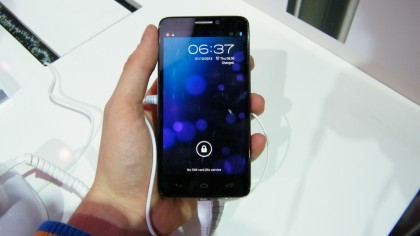How to choose a smartphone for work
Inspecting the specs
Put it in storage
We can’t emphasize enough the importance of storage for a business user. Storing and accessing files is critical to an on-the-go exec, so seriously, go the extra 8 gigabytes (GB) here. It will also help to save you an upgrading fee come next year. Fortunately it’s easy to determine which models have the best storage, which is quantified in GBs and goes by multiples of 8.
The iPhone 6 starts at 16GB, as does the HTC Windows Phone 8X, which is not too shabby though 16GB should considered the base minimum for business storage needs, and really you ought not go below 32GB. Consider smartphones that have a microSD card slot for expandable storage such as Galaxy Note 4 or the Alcatel OneTouch Idol 3. BlackBerry Passport also features a microSD card slot and has 32GB Flash.

Beauty is in the eye of the smartphone holder
Just as it’s important to don a nice suit in a meeting, it’s important that your phone doesn’t look like it was purchased in 1998. But as we all know, looks aren’t everything, and you may want to cut some corners when it comes to the visual aesthetics and focus instead on design functionality – unless of course you work at a creative agency or in another field where you need quick access to topnotch graphics.
The size of the screen is pretty self-evident. “The bigger the better” is a trend right now, but remember that a big screen can be cumbrous, especially if you’ll be keeping this guy in your pocket (rule out the iPhone 6 plus with a fat red sharpie). You probably don’t want to go under 4.5 inches, which is what the Blackberry Passport offers. This is pretty small, but purposefully so, as BlackBerry loyalists love the ample, tactile keyboard.
Size of the screen is one (obvious) aspect; screen resolution is another. These specs are trickier to decode. Look for three numbers like 1334 x 750-pixel resolution at 326 ppi (these belong to the iPhone 6). These numbers inform how bright and sharp the screen is. Since screen is such a core focus of manufacturers at the moment, virtually any new model you get should have a high quality resolution option. The higher the number, the better the screen should be, in theory.
Explaining the depth and character of a screen is a bit like explaining the looks of a movie star with no picture. You’ll know when you see. So take a deep breath and remember that specs tell a lot of the smartphone story, but not all of it. Much comes down to the moment you hold the smartphone in your hand, or hands, if you just can’t resist that iPhone 6 Plus.
Sign up to the TechRadar Pro newsletter to get all the top news, opinion, features and guidance your business needs to succeed!